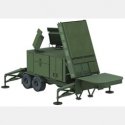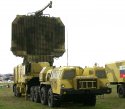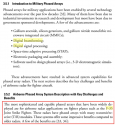I'd say it's still pretty advanced compared against the early AESA systems of the late 1970s. However, the point was to demonstrate that radar
There isn't a lot of early AESA systems, and for the most part the foundation technology is lacking to make it successful. Case in point is this ship.

First ship to have an AESA in the world. But the technological foundation at that time could not meet the ambition. So the radars were scrapped, the ship was converted to using an SPS-48 --- rotating scanning only in elevation PAR --- and lessons learned applied on SPY-1.
designers indeed did build AESA systems similar to that NXP design with analog beamforming. And the F-22 is still flying around, so we can't just ignore it because it's not the future.
There are two things facing the F-22 radar and whether other designs would follow it or not depends.
First, the radar is in uncharted territory. Someone has to do it, like that ship above. Being a pioneer, it may not be trouble free and the lessons learned will be applied to future radar systems and that will result in changes.
Second, the radar was built with the foundation technologies at that time. New systems are going to be built using the foundation technologies of this time. So if you design a system now, you use the technologies on hand, like FPGA, GaN, chip sized amps instead of brick sized amps. There is a huge difference between the techs available before the year 2000 and in 2020. There seems to be already a large gap between the radar systems of the F-22 vs. the F-35.
Sorry, but you brought the Telecom into the discussion. I showed you that indeed, they still do substantial analog processing/computing, besides the obvious front-end RF with tuners, switches, amplifiers and ADCs. An important advantage of analog beamforming over digital is that it is more energy efficient. Further efficiency can be gained by not doing the computation electronically, but optically. This makes sense in presence of substantial optical backbones. The SOWICI project of the Netherlands is an example of this.
Not going to argue this. Still the trend is going digital in order to handle larger volumes of connections. The importance of digital is low noise, even though analog offers high gain, low loss. In anything else below mmwave, its all moving to digital, and probably already all digital with L and S-band frequencies.
Yeah, but that's not a Digital Array Radar. Since the AMDR-S was advertised as a DAR, I think it is fair to assume that the AMDR-X (or is it SPY-5 now?) will be one too, once/if the technology is ready.
Are you sure they are aspiring to have digital beamforming per element rather than per array? The subdivision of MRAs or subarrays in the SPY-6 suggest to me that digital beamforming is in the subarray level. I don't see the point of them trying to go digital beamforming per element versus per subarray if they want to reduce cost, and with a more realistic delivery time. I get the feeling the USN is fed up with engineering experimentation and wants to rush less ambitious but affordable and working technologies into the front.







